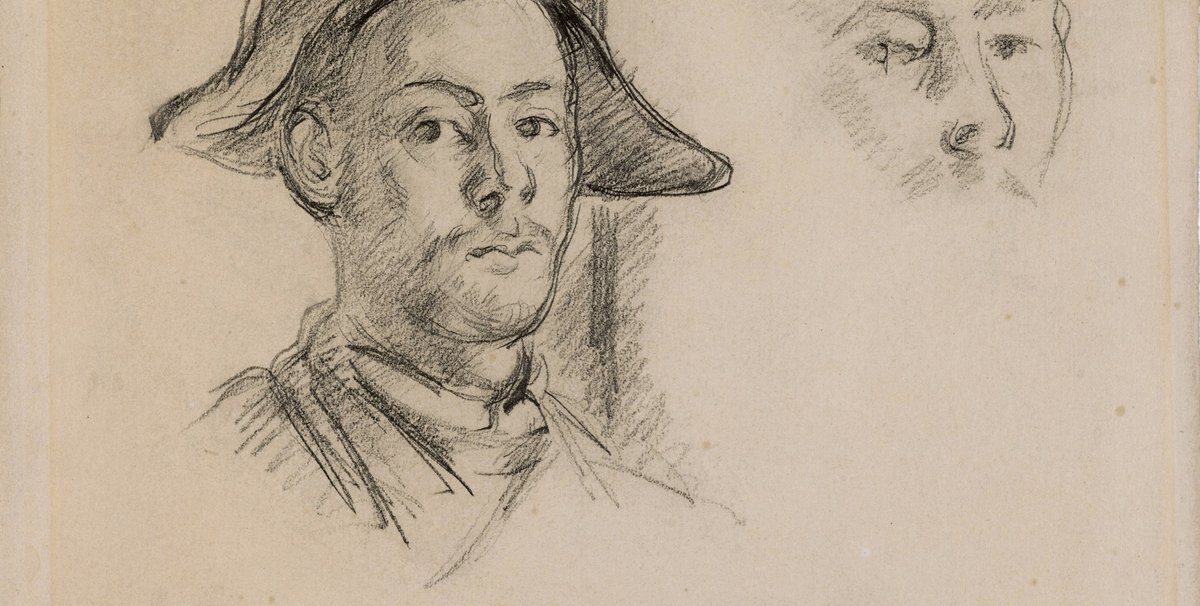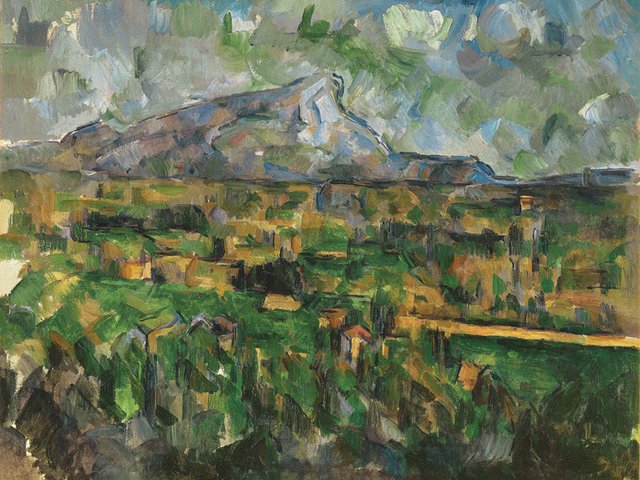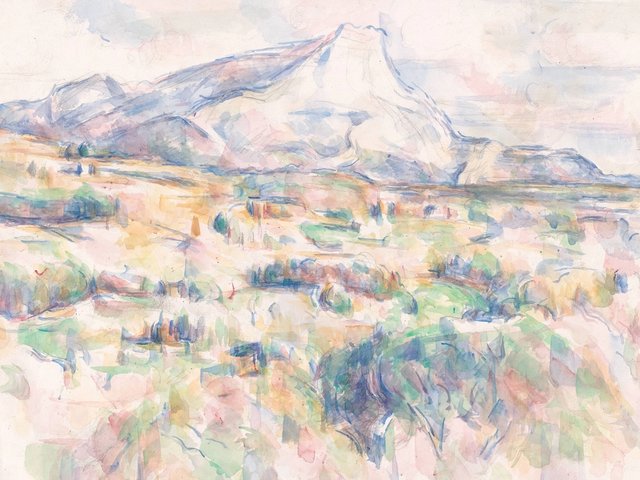The Hidden Cézanne: from Sketchbook to Canvas
Kunstmuseum Basel
Until 24 September
Worn and jumbled, bearing oil stains from the studio and his son’s childish doodles, Paul Cézanne’s sketchbooks have come out of storage for the next three months at the Kunstmuseum Basel. The Hidden Cézanne: from Sketchbook to Canvas (until 24 September), which opened this weekend, is the first exhibition in nearly 30 years of the museum’s 154 sheets, most of them from five sketchbooks. The world’s largest set of the French Post-Impressionist artist’s drawings (229, counting the recto and verso sides) are displayed together with watercolours and oil paintings on loan from public and private collections.
Rarely exhibited due to their sensitivity to light, the drawings reveal Cézanne’s lesser-known practice as a draughtsman. “He draws his son when he’s sleeping, his wife when she’s sewing or [the artist Camille] Pissarro when he’s painting outside,” says Anita Haldemann, the show’s curator and head of the Kunstmuseum’s prints and drawings department. “So, you get a special insight into his private life but also into his personal creative life.”
The forefather of Modernism who composed his paintings from pure patches of colour was trained in the academic tradition of drawing. Alongside his studies in law in the late 1850s, a young Cézanne enrolled in evening classes at the free school of Aix-en-Provence, where he graduated from copying engravings and casts of Classical sculptures to observing the male nude.
Even after he abandoned life models because they “moved too much”, Haldemann says, Cézanne regularly drew from the Old Masters at the Louvre in Paris. The Kunstmuseum has reconstructed, for instance, his series of studies after Pierre Puget’s sculpture of Milo of Croton (1671-82), the Greek athlete said to have been devoured by a lion. Cézanne’s Parisian dealer, Ambroise Vollard—one of the only people to see his drawings during his lifetime—described these museum visits as a visual tonic, preparing the artist to paint well the next day. They also enriched a memory bank of body postures on which he based his many pictures of bathers.
For Cézanne, who liked to carry a pair of small sketchbooks in his coat pockets, drawing was a “private field of experimentation” that spanned all stages of his career, Haldemann says. The earlier sheets show “ideas, figures or whole compositions that are never executed on canvas”. Later, Cézanne transposed his painterly method of colour patching into the sketches. “He never uses one contour but will do very short lines next to each other to build up a figure,” she says.
It was only after Cézanne’s death in 1906 that his son began to take apart and sell off the drawings piecemeal, through Vollard and other dealers. The Kunstmuseum purchased the majority of its trove in two lots from the Swiss dealer Werner Feuz in the mid-1930s. But as documents of Cézanne’s haphazard approach, the sketchbooks cannot be accurately dated even today. “He used them over long stretches of time but opened them randomly,” Haldemann says.
Using details such as the thickness of the paper and traces of rust where it was stapled, conservators have spent two years reconstructing the original sequence of sketchbook pages in the museum’s holdings. The exhibition includes a facsimile of the most complete of the Basel sketchbooks. Better than an interactive digital display, the result gives visitors a physical sense of Cézanne’s working process, Haldemann says. “We wanted to mediate the idea of how the paper feels—how he held it in his hand to draw.”




